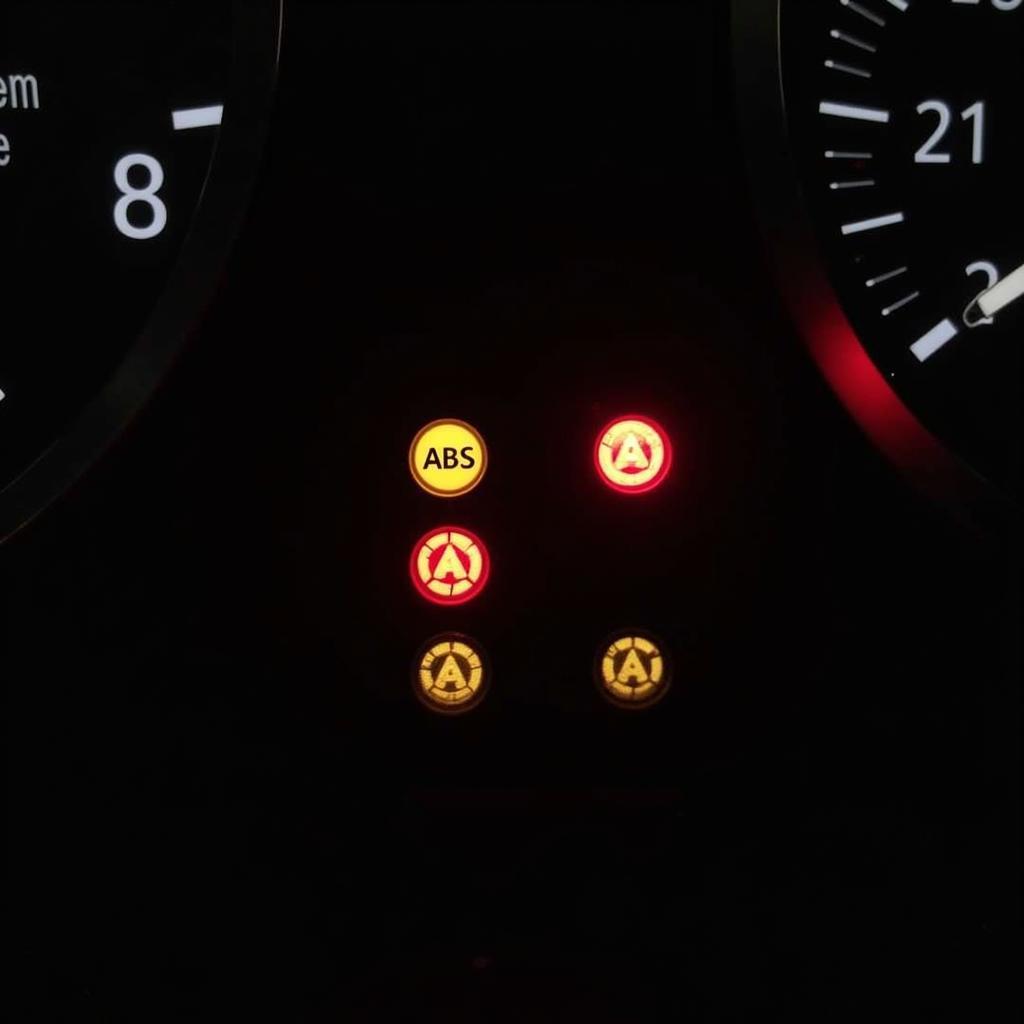If you’re driving a Kia Sportage and see a “Check Brake Light Warning” message on your dashboard, don’t panic. This warning light doesn’t necessarily mean your brakes are about to fail. However, it does indicate an issue within your brake light system that requires your attention. Ignoring this warning could compromise your safety and that of other drivers on the road.
This comprehensive guide is designed to help you understand the common causes of the “Check Brake Light Warning” in a Kia Sportage and provide you with potential solutions to get you back on the road safely.
Understanding the Kia Sportage Brake Light Warning System
Your Kia Sportage, like most modern vehicles, is equipped with a sophisticated electronic system that monitors various components, including the brake lights. When the system detects a problem, it illuminates the “Check Brake Light Warning” message on the dashboard to alert you.
Common Causes of “Kia Sportage Check Brake Light Warning” and Troubleshooting Tips
Here are some common culprits behind the “Check Brake Light Warning” in a Kia Sportage and how to address them:
1. Burnt Out Brake Light Bulbs
Problem: The most frequent cause of the warning is a burnt-out brake light bulb.
Solution:
- Inspect all brake light bulbs: Park in a well-lit area or ask a friend to help you check if all brake lights (left, right, and high-mounted) illuminate when you press the brake pedal.
- Replace burnt-out bulbs: If you find a burnt-out bulb, replace it with a new one of the correct type and wattage. Refer to your owner’s manual for the correct bulb specifications.
2. Blown Fuse
Problem: The electrical circuit responsible for your brake lights is protected by a fuse. A blown fuse can disrupt the flow of electricity, causing your brake lights to malfunction.
Solution:
- Check the fuse box: Locate the fuse box, usually under the dashboard or in the engine compartment (refer to your owner’s manual).
- Identify the brake light fuse: Consult the fuse box diagram in your owner’s manual to identify the correct fuse for your brake lights.
- Inspect and replace: Carefully remove the fuse and inspect it for a break in the wire or a darkened glass. If blown, replace it with a new fuse of the same amperage rating.
3. Faulty Brake Light Switch
Problem: The brake light switch, located behind the brake pedal, is responsible for sending a signal to turn on the brake lights when you press the pedal. A faulty switch might not send the signal properly.
Solution:
- Locate the brake light switch: It’s usually positioned above the brake pedal arm under the dashboard.
- Test the switch: With the ignition off, press and release the brake pedal several times. You should hear a clicking sound if the switch is functioning correctly.
- Replace a faulty switch: If the switch isn’t clicking or seems loose, it likely needs replacement. Consult a mechanic or refer to a repair manual for guidance on replacing the switch, as it involves electrical components.
4. Wiring Issues
Problem: Damaged or corroded wires in the brake light circuit can interrupt the electrical signal, leading to malfunctions.
Solution:
- Inspect the wiring: Visually examine the wiring harness connected to the brake light bulbs, fuse, and switch for any signs of damage, fraying, or corrosion.
- Repair or replace damaged wires: If you discover any issues with the wiring, it’s crucial to have them repaired by a qualified mechanic to avoid further electrical problems.
“Wiring issues can be tricky to diagnose and repair. It’s always best to leave this to a professional to avoid causing further damage,” advises John Miller, an experienced automotive electrician with over 20 years of experience working on Kia vehicles.
Advanced Diagnostics and Remote Software Solutions
Sometimes, the cause of the “Check Brake Light Warning” might not be immediately apparent. In such cases, you might need the expertise of a professional automotive technician who can perform:
- Computerized diagnostics: Using a specialized scanner, technicians can read error codes stored in your Kia Sportage’s computer system, pinpointing the root cause of the warning.
For those comfortable with technology, remote software solutions are emerging as a convenient and cost-effective alternative.
- Remote diagnostics and programming: Specialized service providers like CARDIAGTECH offer remote diagnostics and programming services. These services allow qualified technicians to access your vehicle’s computer system remotely, diagnose the issue, and potentially even fix software-related problems without you needing to visit a physical workshop.
Check out these resources for more information on specific Kia warning light issues:
- kia ceed brake pad warning
- parking brake & brake fluid warning light
- tesla brake warning light
- kia sportage warning signs brakes
- check brake system warning kia sportage 2023 hybrid
Conclusion
The “Kia Sportage Check Brake Light Warning” should never be ignored. While it often indicates a simple issue like a burnt-out bulb, addressing it promptly is crucial for your safety and that of others on the road. If you’re unsure about diagnosing or fixing the problem yourself, seeking professional help from a qualified mechanic or exploring remote software solutions can help you quickly and effectively address the issue and get back on the road safely.

